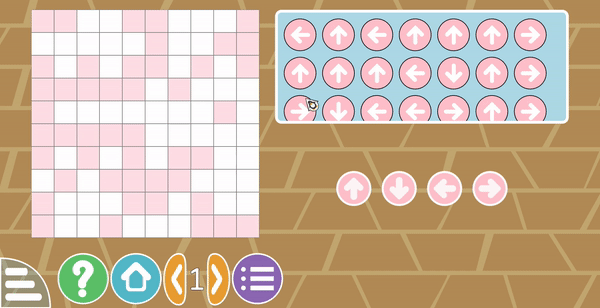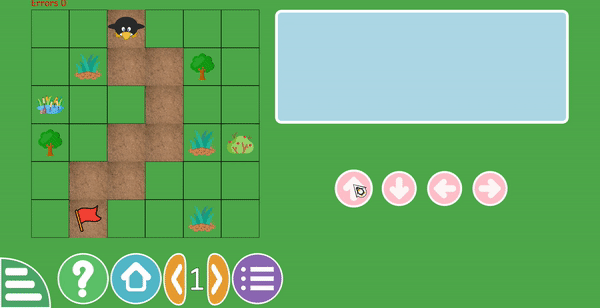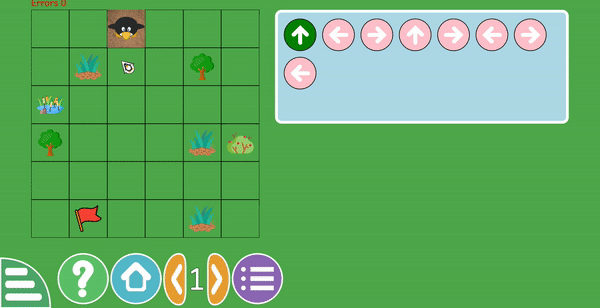GSoC/2021/StatusReports/HarshKumar: Difference between revisions
(→Blogs) |
(→Blogs) |
||
| Line 69: | Line 69: | ||
I wrote blogs, describing my progress during the coding period. Below are the links for these blogs: | I wrote blogs, describing my progress during the coding period. Below are the links for these blogs: | ||
* [https://hadron43.wordpress.com/2021/06/18/gsoc21-week-1-building-a-solid-base/ Week 1 : Building a solid base] | |||
* [https://hadron43.wordpress.com/2021/07/01/gsoc21-week-4-finalizing-path-encoding-decoding-activity/ Week 4 : Finalizing path activities] | |||
* [https://hadron43.wordpress.com/2021/07/30/gsoc21-week-7-layout-for-oware-activity/ Week 7 : Layout for Oware activity] | |||
Revision as of 16:12, 7 August 2021
GCompris: Adding new activities
GCompris is an educational software for kids in the age group 2-10 years old. It has more than 150 activities. This software has a huge userbase, with over 50K+ downloads on the Google Play store alone. Apart from this, it is available on Windows store and apt and snap for Linux.
Mentors
A big thanks to my mentors. Without their help, this would have not been possible. They helped me in each and every way to tackle the problems faced during the project.
- Timothee Giet
- Johnny Jazeix
- Emmanuel Charruau
- Deepak Kumar
Tasks
The objective for GSoC '21 projects in GCompris is to add new activities. I proposed adding two activities to the project. I'm working on adding the following activities:
Path (T14159)
In this activity, the user has to follow a pre-defined path in a grid and reach the target. This activity is suitable for kids above 6 years of age.
This has four different sub-activities:
- Encode
- Encode Relative
- Decode
- Decode Relative
Oware (T1537)
It is a traditional board game played in many parts of Africa. I've explained the rules of the game in my proposal.
This further contains two sub-activities:
- Oware against Tux
- Oware against a friend
Week Wise Report
Week 1
I worked on building a solid base for Encode / Decode activities in the first week. I made a flexible layout. The grid was made using a GridLayout, and a ListModel was used to describe the data for the grid. Code was kept modular, for better readability and flexibility. One of the major challenges that I am facing right now is to make the layout responsive, and make it adapt to the screen size for vertical devices. One of my mentors Timothee Giet suggested using states for this, and display the layout according to the state variable.

Week 2
I added assets to the game. I added Tux to the game. I added the functionality to move Tux, using the keyboard as well as the on-screen buttons. Tux could now move freely on the grid. I added some basic datasets to test the movement of Tux.
Week 3
On feedback from my mentor Emmanuel Charruau, I added multiple other obstacles to the activity. These obstacles were trees, bushes, ponds, rocks, etc. These obstacles were used only for decorative purposes. The activity was now in working condition.

Week 4
I started working on different sub-activities for path activities. I made the decode mode for path activities. Also, I worked on relative mode for both the sub-activities. So, now 4 activities were playable.



Week 5
I worked on making the layout responsive on mobile and other small screen devices. I worked on improvements suggested by mentors. The code was cleaned up and made ready for being merged to the main branch.
Week 6
I added multiple datasets for all the activities. I added 7 maps for each of the activities. These activities varied in size and difficulty level. I added the support for invisible tiles, which enabled creating maps of random shapes.
Blogs
I wrote blogs, describing my progress during the coding period. Below are the links for these blogs:
